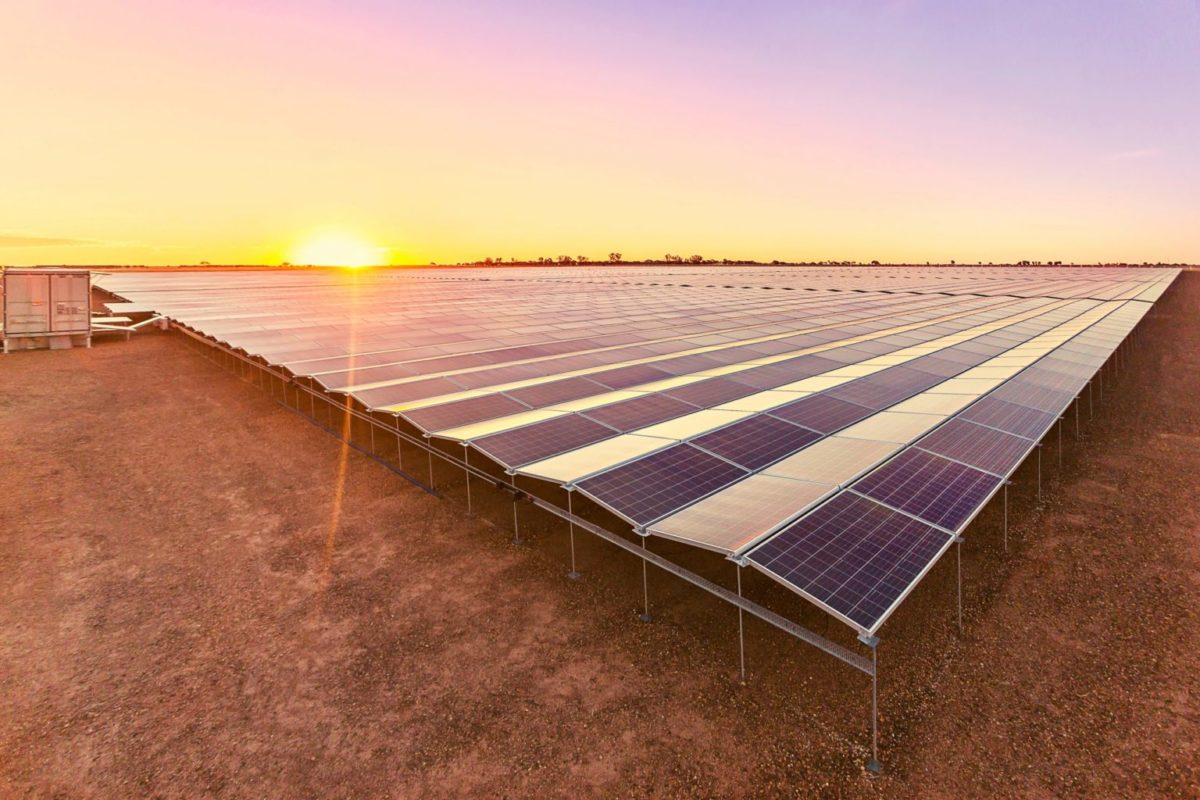The operators of an energy-intensive, cryptocurrency-mining facility in Whyalla, Australia, believe they can offer a solution to the curtailment issues that haunt many developers of solar projects in the National Electricity Market.
Image: Eyre Power
From pv magazine Australia
South Australia’s first solar-powered cryptocurrency-mining facility, which uses renewable energy sourced from a solar project, is now up and running in the town of Whyalla, on the east coast of the Eyre Peninsula.
Developed by the South Australia-based Lumos Digital Mining, the 5 MW data center will be used to mine bitcoin, which requires energy-hungry computers to solve complex maths equations for financial rewards. Lumos CEO Dong Wang said that the facility is powered by renewable energy sourced from the 5 MW Tregalana solar project, which was co-developed by Melbourne-based Climate Capital and South Australia-headquartered renewables developer Eyre Power. The cryptocurrency-mining operation uses 100% of the energy generated by the behind-the-meter Tregalana project, with any remaining power requirements to be met through the grid.
Cryptocurrency production has attracted widespread criticism for the amount of energy it uses, but Wang said the operation provides the developers of the Tregalana Solar Project with a guaranteed baseload, ensuring that the project is financially viable. Wang said output could also be ramped up to use surplus energy from different sources when electricity generation exceeds demand, which could provide a solution for renewable energy developers who are dealing with curtailment issues.
“Renewable energy projects are already not being allowed to connect to the grid due to curtailment and others are suffering heavy losses when they switch off at times of low consumption,” he said. “We keep using the power 24/7 and that’s a huge benefit to the renewables developers, it makes their projects more financially viable. We are basically like a sponge. We soak up the excess that’s not used.”
Wang said cryptocurrency production can also eliminate the need for developers to deploy battery energy storage systems to absorb excess generation, describing the mining operation as “digital storage”.
“Because we are a mining farm we don’t need storage,” he said. “Crypto mining offers a way better and cheaper solution than battery storage. Battery power is only released one or two times a day. Digital mining is a 24/7 business, and this is not just for mining cryptocurrency. We can provide a cloud service, we can provide a computing service for Google, for Apple, for any of the large server companies.”
Wang said the company has already been talking with other energy generation project developers about retrofitting crypto mining facilities to help them overcome curtailment issues.
“We are hoping to sign up more PPAs to assist more renewable projects in the future,” he said. “We are in discussions with some larger developers. If they can retrofit our mining facilities, then we can free up their generation. This represents how we transform the negative NEM price into digital storage and assets.”
The Whyalla operation has the potential to mine at least 100 bitcoins in a year, but Lumos intends to increase the size of the mining facility, with construction of a 10 MW solar farm expected to commence in “a couple of months.” Wang said the facility would be built beside the existing 5 MW Whaylla solar farm which was developed by Lumos’ sister company, Southern Sustainable Electric (SSE).
The output of the Whaylla solar farm, which was commissioned in 2018, is sold on a merchant basis by Melbourne-based SSE. However, the planned 10 MW facility would be used to power an expansion of the cryptocurrency-mining operation.
“We aim to build the most prominent renewable digital mining business in Australia by utilising thriving sustainable energy resources,” Wang said.
This content is protected by copyright and may not be reused. If you want to cooperate with us and would like to reuse some of our content, please contact: editors@pv-magazine.com.
More articles from David Carroll
Please be mindful of our community standards.
Your email address will not be published. Required fields are marked *
By submitting this form you agree to pv magazine using your data for the purposes of publishing your comment.
Your personal data will only be disclosed or otherwise transmitted to third parties for the purposes of spam filtering or if this is necessary for technical maintenance of the website. Any other transfer to third parties will not take place unless this is justified on the basis of applicable data protection regulations or if pv magazine is legally obliged to do so.
You may revoke this consent at any time with effect for the future, in which case your personal data will be deleted immediately. Otherwise, your data will be deleted if pv magazine has processed your request or the purpose of data storage is fulfilled.
Further information on data privacy can be found in our Data Protection Policy.
Legal Notice Terms and Conditions Privacy Policy © pv magazine 2022
This website uses cookies to anonymously count visitor numbers. View our privacy policy.
The cookie settings on this website are set to “allow cookies” to give you the best browsing experience possible. If you continue to use this website without changing your cookie settings or you click “Accept” below then you are consenting to this.
Close

